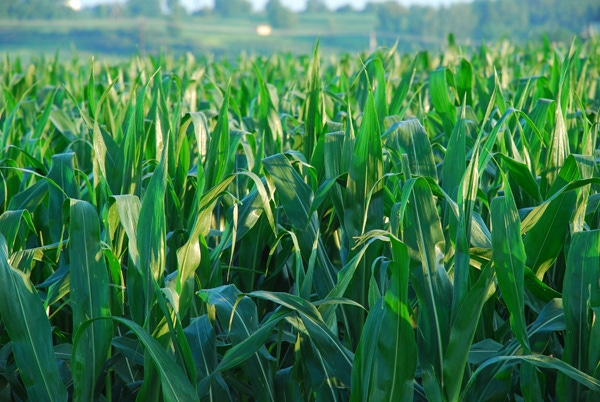
Finally! Some good news for the grain markets after this week’s surprise friendly Planted Acreage report. On Tuesday this week, the USDA surprised the agricultural trade world with the announcement that U.S. planted corn aces were at 92 million acres. That was 5 million acres less than the March Prospective Planting announcement.
The market was not anticipating such a dramatic cut, and prices rallied quickly in response. Funds are exiting their massive short position, which was nearly 300,000 contracts at its peak.
Bearish number eliminated
Using this new planted acreage number of 92 million acres, and even assuming trendline yield, that overly bearish new crop carryout number of 3.3 billion bushels is eliminated! Trade is now assuming new crop carryout will likely be somewhere between 2.5 and 2.75 billion bushels (depending on yield).
A gift!
Let’s be honest, even a 2.5 billion bushel carryout is still on the large side. So unless the rain shuts off during the month of July and traders decide that yield will not come in near trendline, use this friendly price rally bump to get current on cash sales, for both old and new crop.
Often times, any price rally that the corn market sees in early July lasts on average two weeks.
Why two weeks?
During the first two weeks of July, traders are aware of three things: seasonal rallies, the July USDA report, and the radar.
The seasonal rally for corn futures usually lasts for the first two weeks of July – give or take a day. The seasonal rally coincides around weather scares as the corn crop heads toward pollination.
Next, the July USDA report will be released on Friday, July 10th. USDA will apply the updated acres data along with demand updates. Usually this report does not bring in large amounts of fresh news. Instead, trade quickly focuses on weather.
Right now, the forecast includes blazing heat and fewer chances of rain. With the market closed on Friday in observance of Independence Day, a three day holiday weekend can bring about dramatic changes in weather forecasts for when the market opens Sunday evening! Expect a volatile trade week next week as every forecast throughout the day will be salivated over by traders.
Realistic price targets
What is a realistic price target for old and new crop sales?
Looking at both the September 2020 and December 2020 daily corn futures charts, there is HEAVY overhead resistance at $3.70 for the September contract, and $3.75 for the December contract. At those prices points, the 200 day moving average, and the down trending line from last summer’s peak intersect. These price points are considered “resistance,” and will act as a difficult price ceiling to get through. An extreme, extended hot and dry forecast as corn heads into pollination, would likely be the only fundamental reason for prices to be able to climb through those technical resistance levels. So unless Mother Nature decides to keep the rain away during the month of July, really be aware of the potential pricing opportunities on the horizon.
Looking at the image below, with the exception of the 2012 drought, the average early July rally for December corn futures is approximately 35 cents. The price low for December 2020 corn futures on the Planted Acreage report day was $3.32-1/4. Applying this additional historical perspective adds to the notion that the $3.75 price area for December 2020 futures seems like a legit price target for the short term.
In closing, unless the weather forecast turns to moisture sucking heat and no rain, please be mindful of the cash pricing opportunity now in front of you.
Click on the image to see in a new window.
Reach Naomi Blohm: 800-334-9779 Twitter: @naomiblohm and [email protected]
Disclaimer: The data contained herein is believed to be drawn from reliable sources but cannot be guaranteed. Individuals acting on this information are responsible for their own actions. Commodity trading may not be suitable for all recipients of this report. Futures and options trading involve significant risk of loss and may not be suitable for everyone. Therefore, carefully consider whether such trading is suitable for you in light of your financial condition. No representation is being made that scenario planning, strategy or discipline will guarantee success or profits. Any decisions you may make to buy, sell or hold a futures or options position on such research are entirely your own and not in any way deemed to be endorsed by or attributed to Total Farm Marketing. Total Farm Marketing and TFM refer to Stewart-Peterson Group Inc., Stewart-Peterson Inc., and SP Risk Services LLC. Stewart-Peterson Group Inc. is registered with the Commodity Futures Trading Commission (CFTC) as an introducing broker and is a member of National Futures Association. SP Risk Services, LLC is an insurance agency and an equal opportunity provider. Stewart-Peterson Inc. is a publishing company. A customer may have relationships with all three companies. SP Risk Services LLC and Stewart-Peterson Inc. are wholly owned by Stewart-Peterson Group Inc. unless otherwise noted, services referenced are services of Stewart-Peterson Group Inc. Presented for solicitation.
The opinions of the author are not necessarily those of Farm Futures or Farm Progress.
About the Author(s)
You May Also Like






